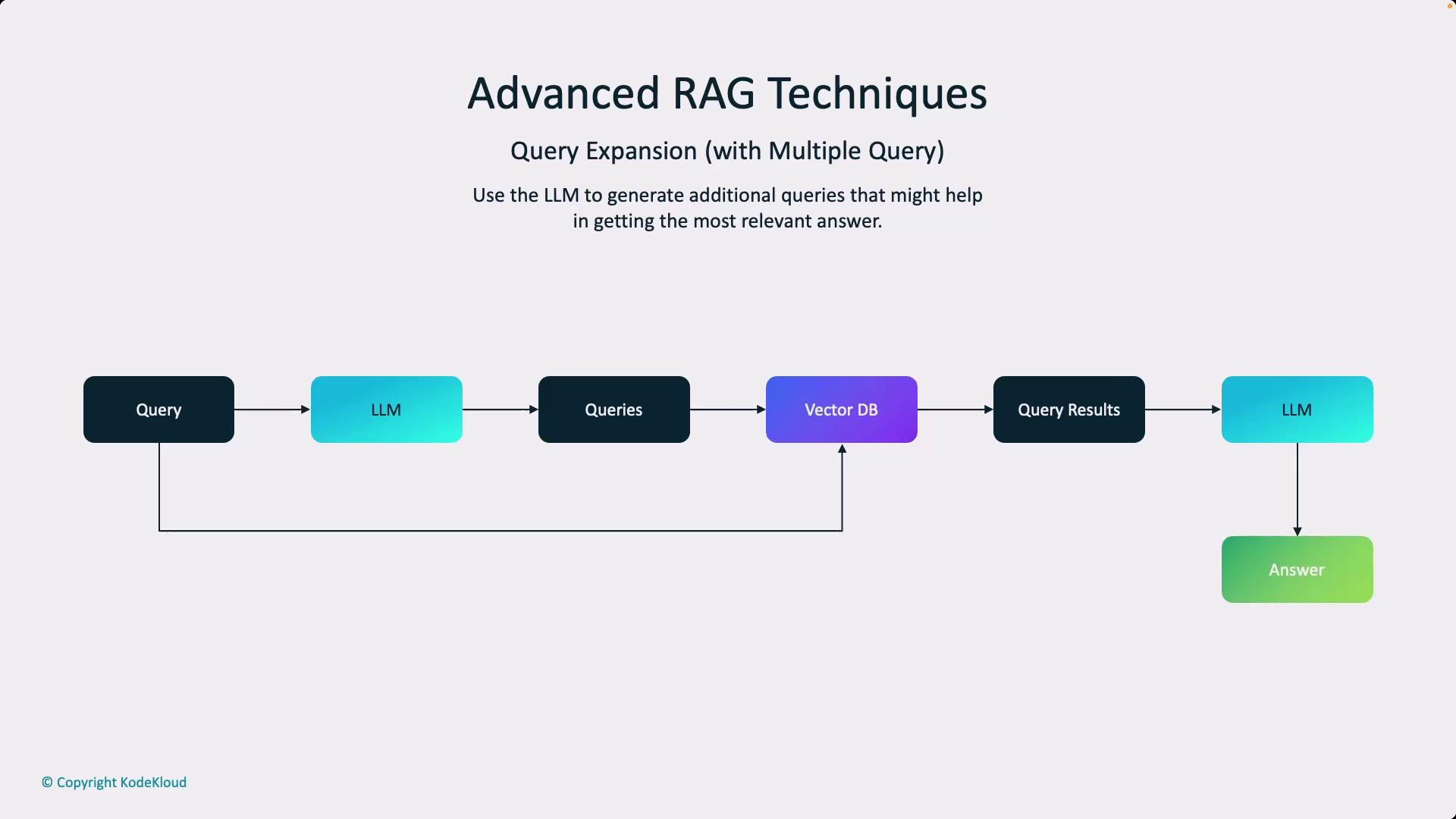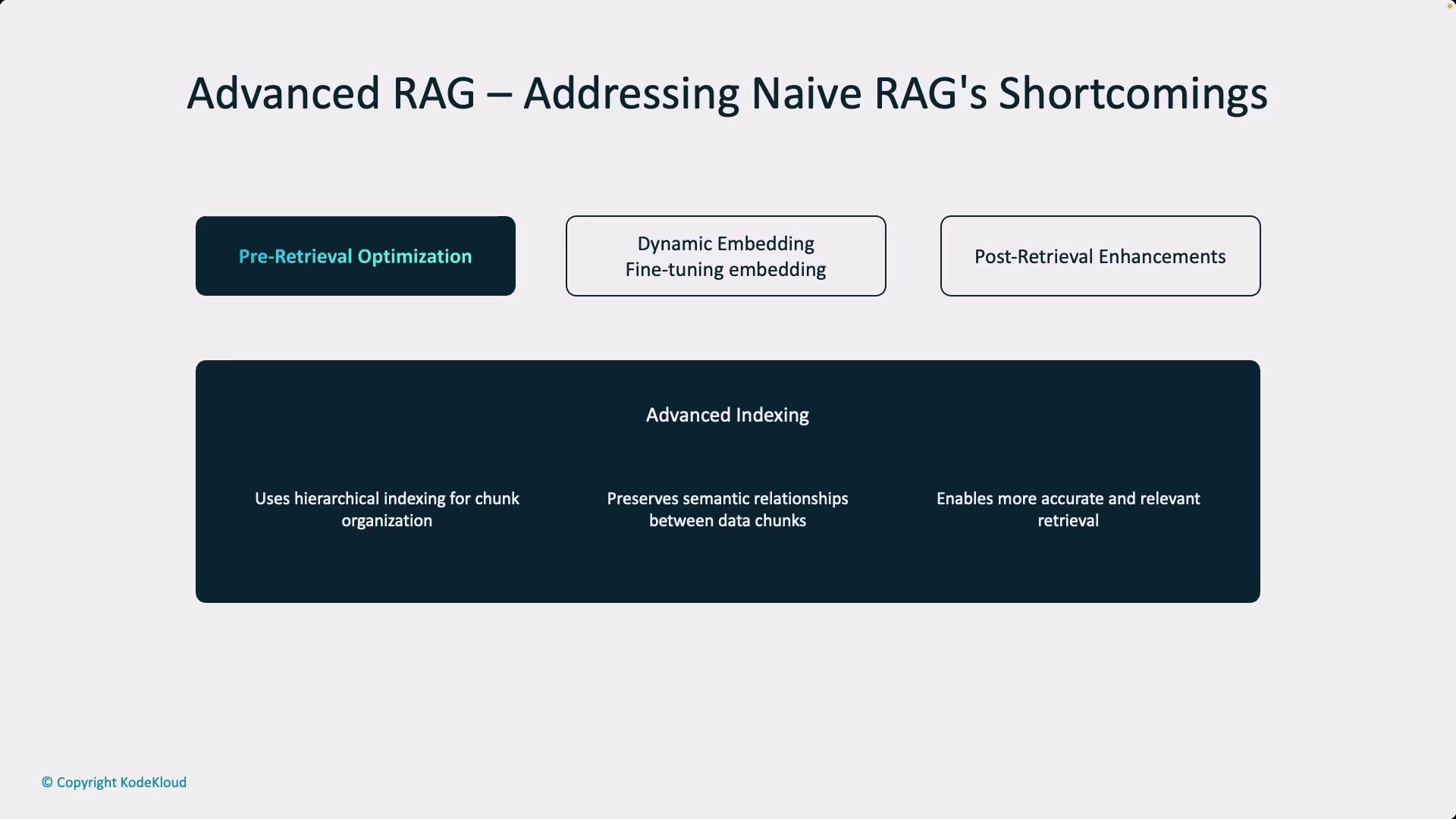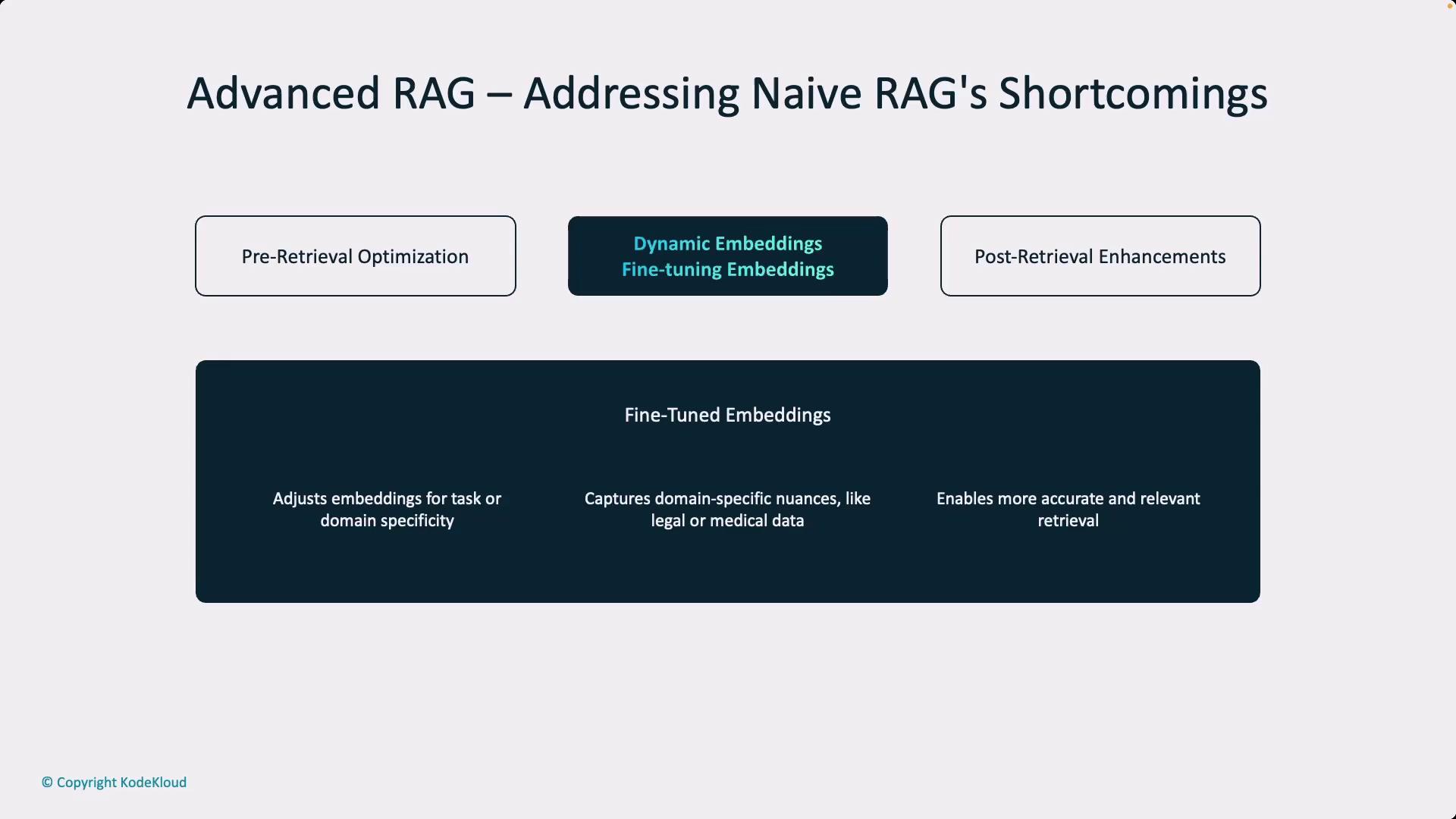Generative AI in Practice: Advanced Insights and Operations
Retrieval Augmented Generation RAG
Advanced Agentic RAG
In this article, we explore advanced, agentic Retrieval-Augmented Generation (RAG) systems. Unlike traditional RAG approaches that rely on fixed, static retrieval methods, agentic RAG systems leverage a more sophisticated understanding of user queries to dynamically retrieve information. This added "agency" enables the system to adapt and improve the quality of retrieval outcomes.
Advanced Techniques in RAG
One proven method in advanced RAG is query expansion. By passing the original query to a large language model (LLM), the system generates multiple versions or extended queries. This approach helps clarify ambiguous or incomplete user queries—particularly valuable in fields like legal research where detailed queries may be lacking.

While employing multiple LLMs for query expansion might increase costs, the resultant precision in search queries can substantially improve the overall quality of the RAG system's output.
Strategies for Enhancing RAG Performance
There are three main strategies to improve RAG performance:
Pre-Retrieval Optimization
Pre-retrieval optimization involves refining the data before it is even queried. Techniques include:
- Advanced Indexing: Hierarchical indexing techniques improve data organization.
- Chunk Organization: Maintaining semantic relationships between data segments.
- Dynamic or Fine-Tuned Embeddings: Enhancing data representation with approach-tailored embeddings.
These methods ensure that the retrieval process is both accurate and relevant.

Query Retrieval Enhancement
At the query level, enhancements can be applied to further refine searches, including:- Query Rewriting: Clarifying implicit details in the query.
- Synonym Expansion: Introducing synonyms to widen the search scope.
- Dynamic Embedding Techniques: Allowing the query to influence its embedding, moving away from static document embeddings.
These technical advancements, while challenging, can deliver a significant performance boost when balanced against the associated costs.
Post-Retrieval Enhancement
Post-retrieval enhancement focuses on refining results after initial data retrieval. Key techniques include:
- Intelligent Re-ranking: Prioritizing the most relevant documents.
- Context Compression: Extracting only the critical parts of retrieved information to reduce noise.
These processes help yield outputs that are both concise and contextually appropriate for further LLM processing.

Another slide further emphasizes context compression as a critical post-retrieval technique.

Traditional RAG vs. Advanced RAG
While traditional keyword-based search methods form the basis of basic RAG implementations, advanced agentic RAG methods have been refined over years of natural language processing (NLP) research—long before the rise of generative AI.
For simpler applications, such as customer service bots or news summarization, a Naive RAG strategy might be sufficient. In contrast, enterprise-level requirements for enhanced precision and domain-specific adjustments call for the sophistication offered by agentic RAG systems.

In complex enterprise environments, advanced RAG systems can intelligently select the most appropriate data source—whether a vector database or a traditional database—based on the specific context of a query. For broader queries, these systems can integrate diverse data sources using built-in logic to retrieve the most relevant and accurate information.
Conclusion
This article has provided an overview of advanced agentic RAG techniques. In upcoming lessons, we will demonstrate live examples and interfaces that showcase how these improvements function in practice. Whether you are a CTO, CIO, or engineer, mastering and implementing these advanced techniques can transform your organization's data retrieval capabilities.
For further reading on retrieval methods and advanced AI practices, consider exploring additional resources on Kubernetes Documentation, Docker Hub, and Terraform Registry.
Watch Video
Watch video content